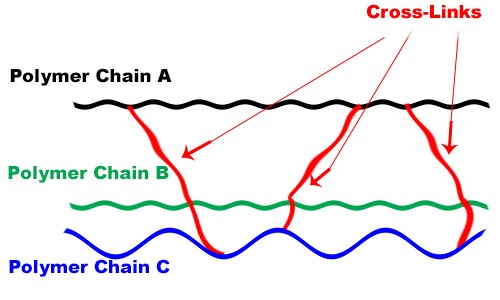What is Cross Linked Shrink Film?
What is Cross Linked Shrink Film?
Cross linking polymers was discovered when inventors were
searching to find a way to stabilize rubber in the mid 1800's. Charles Goodyear discovered vulcanized rubber after
years of research. The main objective was to stabilize natural rubber from
distorting in heat.
The result was Goodyear accidentally melted rubber and
sulfur on a hot stove. The combination of the two allowed the rubber to
withstand higher heats. Unknown to Goodyear at the time, the heated sulfur and
rubber changed the polymer chains within the rubber.
The changed polymer chains were cross linked to form a
stronger, more durable material. Since the invention of vulcanization, the
advancements in cross linking have changed tremendously. Cross linking can
be achieved with a variety of chemical additives referred to a chemical cross
linking or with irradiation.
The most common form of cross linking used for flexible
packaging materials is irradiated cross linking. Irradiated cross linking uses
electron beams that produce high energy B rays. During the irradiation process,
different bonds within the film cross link together.
The newly transformed cross-linked shrink film offers a
variety of benefits. Below is a list of detailed benefits cross linked
polyolefin shrink film offers over standard polyolefin shrink film.
Increased Puncture Resistance - One of the primary benefits of a cross linked shrink film
over standard shrink film. The cross linking of polymers increases puncture
resistance enabling users to use thinner film while still obtaining the same
strength. A thinner film offers a variety of benefits with the primary
benefit being cost. Thinner shrink film also offers better clarity, faster
sealing, and faster shrinking.
Stronger Seal Strength - The
weakest point in a shrink-wrapped package is the seal seams. A standard shrink
film does not obtain the same seal strength as a cross linked shrink film.
Stronger seals reduce damaged packages and ensures customers are purchasing a
product that has not been tampered with.
Less Residue - Over
time a shrink film will leave residue behind on the sealing wire or blade. The
left-behind residue causes the need to replace sealing wires and blades. For
fully automatic machines making thousands of seals daily, a reduced residue is
ideal for saving time and reducing the amount of replacement sealing blades.
Increased Clarity - The
ability to use a thinner film with comparable strength increases the clarity of
the shrink film. Irradiated cross linked shrink film also has less haze for
better clarity.
Longer Rolls -
Before cross-linked shrink film became popular, 60-gauge rolls were the
thinnest polyolefin shrink rolls on the market. Standard 60 gauge shrink film
rolls are 4,370 ft. long. The ability to produce thinner 45 gauge and 30 gauge
shrink film enables manufacturers to sell longer rolls. Longer rolls mean less
down time for roll changes and more time for production.
Applications
Cross linked shrink film is more expensive than standard
shrink film and is not ideal for every application. The higher price is often justified
because it is a superior product over standard shrink film. See below for
recommended applications of cross-linked polyolefin shrink film.
High Speed Shrink Wrapping - Fully automatic shrink wrap machines and semi auto machines
wrapping thousands of products per day are perfect for cross linked shrink
film. For fully automatic machines, a cross linked polyolefin shrink film will
dramatically reduce headaches.
Lightweight Products - For
light products weighing a few ounces, a cross linked shrink film may be
the way to go. A lighter 45-gauge cross linked shrink film can provide
professional packaging at less cost than a standard 60-gauge polyolefin shrink
film.
Heavy Products -
A 100-gauge cross linked shrink film is stronger and offers more seal strength than
a standard 100 gauge shrink film. A standard 100 gauge shrink film is often not
strong enough for a heavier product. Instead of going to a polyethylene shrink
film, a cross linked 100-gauge polyolefin film may be a better option to try.
Products with Sharp Edges - Because of the increased strength of a cross linked shrink
film it can often be a better option for products with sharp edges and corners.
The cross-linked film can help ensure products will reach customers without
being tampered with.
More information at www.quickpakinc.com




Comments
Post a Comment